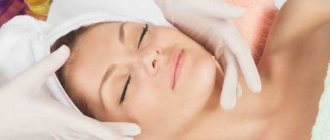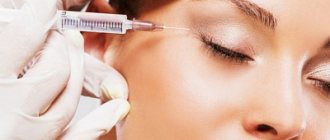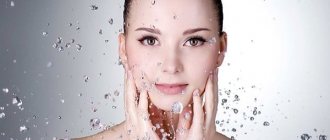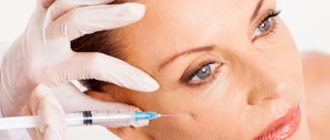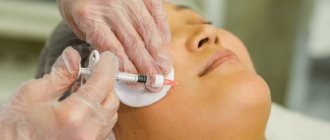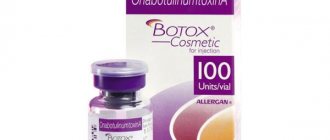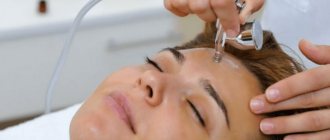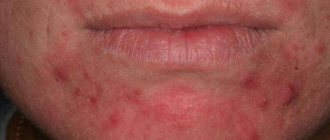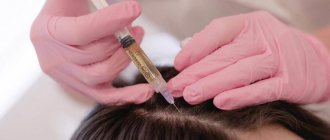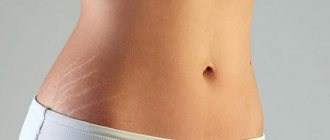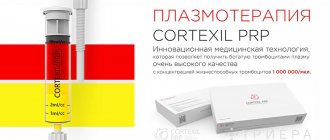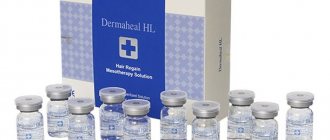Mesotherapy and biorevitalization. Both injection procedures, with a similar technique for administering drugs, are aimed at deeply moisturizing the skin and saturating it with nutrients. No wonder they are confused. The main difference between the methods lies in the composition of the pharmacological drugs. Knowing how they affect the skin, it is much easier to make a choice and understand why a cosmetologist recommends this or that type of injection technique.
Deep skin hydration techniques
What you need to know about hyaluronic acid?
To better understand the essence of biorevitalization and mesotherapy, let's start with the main component used in both methods - hyaluronic acid (HA).
The body needs it because it is responsible for the water balance of tissues. In addition, HA at the cellular level stimulates the synthesis of collagen, a protein that ensures the density and elasticity of fibers. The condition of the skin depends on the amount of hyaluronic acid. If the indicator is normal, the skin is moisturized, elastic, healthy in appearance, if it is reduced - dry, flaky, covered with a network of wrinkles.
Moisture content in the dermis
To replenish lost natural moisture, hyaluronic acid is injected into the middle and superficial layers of the dermis in microdoses, pointwise. In this way, a reserve is created that activates recovery processes, forces cells to work and synthesize HA on their own.
Several types of hyaluronic acid are used in therapeutic cosmetology.
Based on the size of the molecules and their penetrating ability, two forms are distinguished:
- High molecular weight – suitable for deep hydration. The higher the molecular weight of hyaluronate, the better the morphogenesis of the polymer network, the more viscous the solution becomes at low concentrations. This allows you to cover a large area of skin with a continuous moisturizing film. Used for biorevitalization and vector lifting.
- Low molecular weight – moisturizes and heals the skin, helps to evenly distribute other active substances. Disintegrates faster than the high molecular weight form. Used for injections in mesotherapy and hardware cosmetology.
Based on their molecular structure, there are two types of HA:
- Unstabilized HA disintegrates quickly. Its main task is to stimulate the production of collagen in cells. Used in mesotherapy and biorevitalization.
- The stabilized form consists of molecules tightly bound (cross-linked) to each other. The purpose of drugs with such a component is to replenish tissue volume. Used for fillers in contour plastic surgery.
The content of hyaluronic acid in preparations can be different - 0.8%, 1.6%, 2%. Less concentrated formulations are used for superficial injections, denser ones are used for fillers.
Diagram of the effects of hyaluronic acid
Description of the procedure
Facial mesotherapy is a fairly simple, minimally invasive procedure, but, nevertheless, it requires some preparation.
Initial consultation
At the initial appointment, the doctor not only diagnoses the skin and identifies existing problems and defects, but also collects a detailed medical history of the patient, including information about lifestyle and work habits. The patient must tell what diseases he suffered from, what medications he took during the last month, and also give truthful information about the presence of bad habits. This is important, since in some cases, for example, with frequent consumption of alcohol in large quantities, the procedure will be practically ineffective and, moreover, can cause serious side effects associated with the effect of ethanol on blood vessels.
The doctor conducts an initial examination and history taking
In some cases, at the next visit (directly on the day of the procedure), the specialist may ask to bring a physician’s report, as well as the results of a clinical examination of urine and blood.
Preparation
During your first appointment, your doctor will also give detailed recommendations on how to prepare for the procedure. No special actions are required for this, but it is necessary to follow these instructions in order to avoid negative consequences.
3 days before the appointed date you must:
- completely stop drinking alcoholic beverages;
- exclude from the diet foods and drinks with a lot of caffeine and spicy seasonings;
- reduce the intensity of physical activity;
- refuse to visit the solarium (ultraviolet radiation stimulates the breakdown of hyaluronic acid in the cells of the dermis, so ignoring this recommendation may lead to a decrease in the effectiveness of the procedure).
Drinking coffee and alcohol should be stopped three days before the procedure
If the patient is constantly taking any medications, or is currently undergoing a course of treatment, the question of the possibility and need to discontinue them is decided at the first consultation. Taking anticoagulants is a contraindication for mesotherapy: these drugs must be discontinued no later than 72 hours before the injection.
Execution technique
The procedure for mesotherapy with hyaluronic acid is quite simple and short in time: all actions usually take no more than 1 hour. It takes place in several stages, which are performed in strict sequence.
Table. Injection facial mesotherapy with hyaluronate: stages
| Stage | Description of actions |
| Before starting the procedure, the doctor must examine the skin for symptoms of infectious, inflammatory and purulent pathologies, allergic reactions, and also assess the integrity of the skin. If there are abrasions, cuts or other injuries, the procedure is not performed. |
| The de-makeup procedure is necessary not only to remove residual makeup, but also to cleanse the skin of sebum, dust, dirt and dead skin cells of the epidermis. For this purpose, cosmetologists use soft cleansing mousses and foams that contain vitamins, plant extracts, and also soothe the skin and prepare it for further manipulation. |
| An anesthetic gel is applied to the face (Emla gel with prilocaine and lidocaine is most often used). The anesthesia begins to take effect in approximately 20-30 minutes. |
| Puncture sites are treated with aqueous solutions of antiseptics: chloramine, furatsilin, chlorhexidine. It is acceptable to use medical grade 70% alcohol. |
| The markings are applied with a special washable marker. The puncture points are determined, as a rule, at a distance of no more than 3 mm from each other. |
| Administration of the drug | The drug is injected under the skin to a depth of up to 4 mm (depending on the purpose of use) using a thin-walled needle or cannula. After insertion, the puncture sites are re-treated with an antiseptic. |
If mesotherapy is carried out using hardware methods (for example, using ultrasound or laser), hyaluronic acid is applied to the skin in the form of a highly concentrated gel, after which the doctor begins treatment using special attachments - generators of various energy flows. After the procedure, a soothing cream with B vitamins and panthenol is applied to the skin and the skin is examined for possible complications (swelling, hematomas, burns, etc.).
Hardware mesotherapy
Biorevitalization
Biorevitalization is an injection technique for skin rejuvenation using preparations consisting of bioactive substances, their main component being high molecular weight unstabilized hyaluronic acid. The method involves intensive saturation of the dermis with moisture and restoration of water balance.
The procedure is indicated for those with generally healthy but tired skin with signs of aging. Microinjections solve the following aesthetic problems of facial skin:
- dryness;
- peeling;
- parchment leather;
- deterioration of color;
- feeling of tightness;
- decrease in turgor.
The goal of the procedure is not just to accumulate moisture reserves and tighten tissues, but also to bring the epidermis back to life, normalize metabolism, and launch the cell renewal mechanism. This is only possible with a systematic approach. The visible effect from one session is minimal, since the processes first take place at the intracellular level. A course of biorevitalization that will give tangible results is 4-5 procedures, with a break of 2 weeks after each.
The effect of biorevitalization
Biorevitalization is carried out under local anesthesia - using an anesthetic cream that is applied to cleansed skin. Biorevitalizant injections are multiple, intradermal, shallow (3-4 mm), so the procedure is relatively painless.
Posted by Wellness Club Face & Body (@facebodyclub) Jul 23, 2021 at 10:19 PDT
Biorevitalization. Hand rejuvenation procedure
The area of special attention for cosmetologists is the periorbital area. The skin around the eyes is very thin, there is practically no fatty tissue. Conventional biorevitalizants with hyaluronic acid do not always give the expected result.
A new product in injection techniques is the drug Mesoeye C71 from the group of peptides. It restores, tightens the skin, and has a lymphatic drainage effect. To make it clearer, it “teaches” cells to regulate the outflow of excess fluid and not accumulate it.
During the procedure, which lasts approximately 60 minutes, the drug is administered in small papules to a depth of 1-2 mm. The course consists of 3-6 sessions with an interval of 7-10 days.
Correction of the periorbital zone
Effect of therapy
Hyaluronic acid is one of the main components of mesotherapy cocktails, but most of them also contain other substances (one of the main differences between mesotherapy and contouring with fillers, which solves only the problem of mechanical filling of voids in the subdermal space). These can be plant extracts, peptides, collagen, organic and amino acids, vitamins, mineral salts. All these components nourish the skin, saturate it with the elements necessary to maintain beauty and health, and also stimulate immune and antioxidant function, slowing down the aging process.
Cocktails for mesotherapy contain a whole range of substances beneficial for the skin
Clinically, the result of a course of mesotherapy with hyaluronic cocktails (less commonly, single preparations of hyaluronate) is manifested by the following changes:
- pigment spots become less noticeable;
- the skin is tightened, shallow folds and creases disappear;
- the oval of the face becomes clearer;
- the microrelief of the skin and its turgor (tone) are leveled;
- manifestations of inflammatory skin pathologies (acne, pimples, comedones) are reduced;
- dryness and flaking disappear, the skin becomes smoother and more pleasant to the touch;
- the complexion is evened out, red spots disappear, a beautiful healthy shade appears;
- Periorbital edema decreases, bags under the eyes disappear.
After mesotherapy, the skin looks tightened, more elastic, and the complexion is evened out.
Hyaluronate injections are especially effective for patients with initial signs of skin aging. After 30 years, the amount of moisture in epidermal cells (as well as in other connective tissue cells, for example, cartilage fibers) gradually decreases, which leads to drying and loosening of the collagen framework of the skin, loss of elasticity and the appearance of the first wrinkles. The introduction of hyaluronic acid helps not only fill the resulting voids and restore skin turgor, but also improve the overall condition of the skin by restoring the hydrodynamics of dermal tissues.
Note! You can evaluate visible changes after mesotherapy with hyaluronic acid immediately after the session, but significant results will be noticeable after about 10-14 days, when the molecules of the active substance attract a sufficient amount of liquid and skin hydration is completely restored.
The full result appears 2 weeks after the procedure
Mesotherapy
Mesotherapy is a minimally invasive technique for skin rejuvenation and therapy using injections of therapeutic cocktails.
The basis of mesotherapy preparations is unstabilized low molecular weight hyaluronic acid of low concentration. In addition to it, the medicinal mixture necessarily includes other useful ingredients:
- complex of antioxidant vitamins (A, C), group B;
- microelements;
- amino acids;
- bioactive plant extracts;
- organic acids.
The procedure helps to get rid of age-related skin changes and a “bouquet” of aesthetic problems. Indications for mesotherapy:
- tired skin;
- dryness, feeling of tightness;
- pigmentation disorder;
- acne;
- enlarged pores;
- premature wrinkles.
A full course consists of 8 to 10 sessions, which are carried out every 7-10 days. The procedures help initiate tissue self-healing. The technique promotes rejuvenation, but most importantly, healthy skin. Therapeutic cocktails nourish it, normalize metabolism, moisturize, and tighten.
The photo shows the progress of the mesotherapy procedure
Experienced cosmetologists recommend performing anti-aging injection procedures before serious cosmetic procedures (thread lifting, vector lifting), plastic surgery. They make it possible to qualitatively prepare the dermis, nourish it with moisture, and activate regenerative properties. Mesotherapy is effective during the rehabilitation period after plastic surgery.
How does the patient feel?
Many people are concerned about how painful facial mesotherapy with hyaluronic acid is. In this regard, the procedure can be compared to filler injections. The punctures themselves, as a rule, do not cause significant discomfort due to preliminary premedication with anesthetics. During the administration of a mesotherapy cocktail, the patient may feel distension and pressure under the skin associated with a mechanical effect on the subdermal (subcutaneous) structures.
Moderate pain at the puncture sites is acceptable after the procedure, when the anesthetic wears off. This pain may persist for 24 hours, and its intensity should gradually decrease approximately 7-8 hours after the injections. When using microcurrent or laser energy, unpleasant sensations in the form of tingling, burning and pinching are possible, but the procedure is not accompanied by severe pain.
Slight discomfort may be felt during the procedure
Photos before and after
Photos before and after mesotherapy with hyaluronic acid No. 1
Photos before and after mesotherapy with hyaluronic acid No. 2
Photos before and after mesotherapy with hyaluronic acid No. 3
What is modern mesotherapy?
The mesotherapy procedure is the introduction of cocktails of beneficial substances into the dermis using a thin needle. The year of birth of this technique is considered to be 1958, although the prerequisites for the emergence of mesotherapy were much earlier. Since the second half of the 19th century, doctors have practiced targeted administration of drugs to the problem area, that is, locally. In the middle of the 20th century, physician Michel Pistor published his study, according to which the high effectiveness of local administration of procaine into the dermis was noted. By 1968, the French Society of Mesotherapists was formed. Subsequently, the method began to be used in aesthetic medicine to eliminate skin imperfections, improve its quality and prolong youth.
Injection mesotherapy can be performed on both the face and body. There are also needle-free mesotherapy methods. Modern devices make this procedure comparable in effectiveness to injection.
Mesotherapy is used to restore the water balance of skin cells, treat acne, smooth out wrinkles, eliminate pigmentation, scars, etc.
There is mesotherapy with hyaluronic acid - it is called biorevitalization. In other cases, the hyaluronic component is present in the preparations along with other substances: collagen, elastin, placenta, etc. There are many types of mesotherapy solutions. The cocktail may include organic acid (prolactic, pyruvic, etc.), calcium, magnesium, retinol, enzymes and other substances.
Meso cocktails:
increase the tone and protective function of the skin;
improve metabolism;
stimulate regeneration processes;
fight photoaging, pigmentation, local fat deposits, etc.
Contraindications to the procedure
Despite its safety, mesotherapy cannot be used:
- during pregnancy and lactation;
- in the presence of postoperative wounds;
- with blood pathology;
- in the presence of allergic reactions to the components of the drug.
Contraindications include oncology, severe cardiovascular diseases, and diabetes.
Be careful during the procedure during treatment with hormonal drugs.
To avoid harm to your health, you should consult your doctor before undergoing the procedure.
Recovery period
Skin care rules, as well as recommendations regarding the regimen and lifestyle after mesotherapy, are common to all patients.
- After mesotherapy with hyaluronic acid, sudden temperature changes should not be allowed. Thermal procedures, prolonged exposure to the cold (especially important for persons working in refrigerated rooms or cold warehouses), and the consumption of hot foods and drinks are prohibited.
- Exposure to ultraviolet radiation throughout the recovery period must be strictly dosed, since ultraviolet radiation destroys hyaluronic acid, which can lead to a lack of effect from treatment.
- During the first 3-5 days, it is advisable not to use decorative cosmetics, not sleep on your stomach and touch your face with your hands to a minimum. You should also not massage the skin.
- Power loads are prohibited throughout the entire rehabilitation period.
Any power loads are contraindicated during the rehabilitation period
It is important that during the recovery period the patient does not have problems with microcirculation. It is not recommended to wear clothes that restrict movement, drink alcohol, or drink a lot of coffee and tea (with the exception of herbal teas).
Important! It is necessary to observe the restrictive regime throughout the entire course, the duration of which can be up to 4-5 months.
Similarities between mesotherapy and biorevitalization
Scheme of implementation
The procedures follow a single algorithm:
- Clean the skin and treat it with an antiseptic;
- Local anesthesia is given;
- Special markings are applied to the skin, according to which hyaluronic acid, which is the active ingredient, will be introduced;
- The drug is injected (to a depth of 1-3 millimeters) into designated points, which leads to the appearance of small tubercles (papules);
- Apply a soothing cream to the damaged areas to relieve inflammation.
Side effects
Mesotherapy and biorevitalization belong to invasive techniques. Therefore, after the procedures there is a risk of side effects and various complications, which include:
- quite severe pain (in some cases local anesthesia does not work);
- inflammatory processes at the sites of needle insertion;
- the occurrence of swelling;
- the appearance of hematomas, seals, scars, hypo- or hyperpigmented areas of the skin;
- introduction of infection;
- necrotization of soft tissues due to intolerance to the “cocktail”; (with mesotherapy observed in 1% of cases).
Contraindications
Mesotherapy and biorevitalization cannot be performed if:
- individual intolerance to the ingredients used;
- violation of blood clotting properties;
- taking anticoagulants—drugs that thin the blood;
- tendency to form keloid scars;
- infectious (bacterial, viral, fungal) skin lesions in the planned injection area;
- mechanical damage to the skin, the presence of moles and papillomas in the area of influence;
- cholelithiasis;
- psoriasis;
- atopic dermatitis;
- pregnancy and breastfeeding.
Flaws
Despite the high efficiency of the procedures and many advantages, they also have disadvantages:
- after cosmetic procedures, patients usually experience discomfort for 2-3 days due to the presence of papules that appear after microinjections, swelling and inflammation of the skin;
- during the administration of drugs, you should not visit the pool or sunbathe;
- dependence on procedures - it is necessary to constantly maintain the resulting effect, since it is temporary;
- the duration of the treatment course is often directly proportional to the financial capabilities of the patient;
- mesotherapy is quite often addictive;
- the effect largely depends on the level of professionalism and experience of the specialist, which affects the cost.
Indications for the procedure
Injection mesotherapy is indicated for:
- for loose, dull skin;
- the appearance of edema, decreased skin tone;
- presence of wrinkles;
- period after insolation.
Mesotherapy can also be used to reduce rehabilitation time after various peeling procedures or plastic corrections.
Despite the total duration of the course from 4 to 6 procedures, after the first you will be able to observe a significant improvement in the condition of the skin.
The advantages of the procedure are:
- comfort – injections are made subcutaneously with a thin needle, discomfort is minimized;
- minimal risk of vascular injury;
- the possibility of carrying out the procedure using a linear technique that demonstrates excellent results in smoothing out wrinkles;
- the drug is evenly distributed under the skin;
- high effectiveness - the effect is noticeable after the first procedure and lasts a long time;
- mesotherapy is combined with other cosmetic procedures.
Stages of the procedure
Mesotherapy is carried out in several stages:
- skin cleansing;
- marking;
- cocktail preparation;
- cutting zones along arcades in the usual way or using a mesoinjector.
Since modern drugs already contain the required dose of an anesthetic, as a rule, additional anesthesia is not required.
The duration of the session is about 30 minutes.
The course of any cocktail from the FILORGA line is up to 8 procedures.
Sessions are held once every ten days.
The results last for up to ten months.
Skin care after the procedure
Some patients may experience slight swelling or bruising after the procedure. After a few days they will disappear.
In order for the rehabilitation period to proceed as quickly and gently as possible, it is important to follow these recommendations in the first three days after mesotherapy:
- do not visit the sauna or swimming pool;
- do not use decorative cosmetics;
- avoid exposure to direct sunlight;
- do not use medications without prior consultation with a specialist;
- refrain from active loads.
